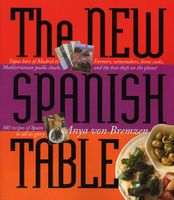Advertisement
Rice and Pasta
Published 2005

Top left: Colorful houses with charming grillwork and bamboo shades line the streets of Villajoyosa, a fishing village on the Costa Blanca; Top right: Cooking several paellas at the same time is hard work; Bottom left: The abundant fields of Valencia ensure plenty of rice for its classic dish, paella; Bottom right: A mosaic doorway in Cabanyal, Valencia.
Rice has been grown on the Mediterranean shores for more than two millennia, having been introduced by soldiers returning from Alexander the Great’s expedition to India in 327 B.C. Yet Spain’s rice consumption truly took off only when Arabs conquered the country’s southeastern coast in the eighth century A.D. Applying their legendary agricultural skills to rice cultivation, the Muslim invaders planted the grain in the fertile soil around Valencia, irrigating the paddies with a brilliantly complex network of dikes and canals. These ingenious Arab watercourses still irrigate the picturesque wetlands around Albufera, a freshwater lagoon south of Valencia, where much of Spain’s rice production is concentrated. The Spanish word for rice, arroz, comes from the Arabic al-ruzz. “For Islam, agriculture had a religious sense,” notes paella authority Lourdes March. “Water was the symbol of life and the earth the symbol of fertility and every product extracted from it would multiply in Paradise.” Rice would flourish in this environment.

